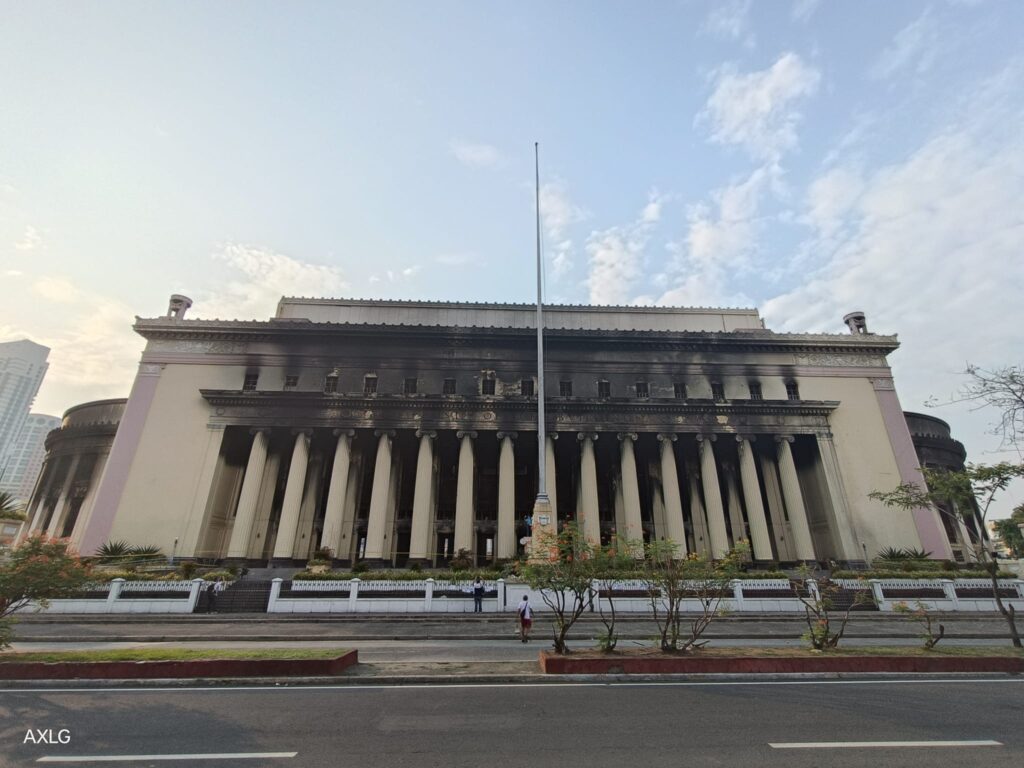It’s been a month since we witnessed this fire incident at the iconic Manila Central Post Office building, a testament to the city’s rich architectural heritage. Constructed in 1926 with towering columns and a classical design. The building endured the ravages of World War II and was painstakingly reconstructed in 1946. The recent incident has raised concerns about the reason behind the unfortunate incident.
However, the PhilPost has recently issued a press release about this.

Image: Axl Guinto Facebook
As stated in their press release, arson investigators from the Bureau of Fire Protection (BFP) immediately conducted their investigation on the fire that damaged the 97-year-old structure, which is regarded as National Historical Landmark. The Bureau of Fire Protection (BFP) ruled that the cause of the fire that gutted the historic Manila Central Post Office Building in Liwasang Bonifacio was purely accidental in nature and declared that the investigation is considered closed and solved.
The Philippine Postal Corporation (PHLPost) already got hold of the fire clearance certificate issued by the BFP saying that the fire originated in the southern part of the basement, more particularly at the Mega Manila Storage Room (GSS) where office supplies, thinners, paint cans where piled in close proximity to the car batteries stored inside the room.
The BFP report stated that the combustibility of the load contents and its enclosed set-up greatly influence heat build-up that explains the explosion and subsequent conflagration. This led to the full development of fire and subsequent damage to the nearby structures.
On the determined cause of the fire, it has been established, based on the pieces of evidence gathered, that the statement of the witness and the result of the laboratory examinations that the cause of the fire is attributed to the sudden self-discharge of the car battery (sulfation) resulting to thermal run-away, causing a sudden build-up of heat and pressure and eventually cause the explosion.
Moreover, the presence of the internal short circuit, the hydrogen and the volatile gases contained in the battery, and the presence of oxygen as the oxidizing agent initiated the ignition. The contributory factors and the combustibility of materials fueled and sustained the ignition sequence.
Postmaster General Luis Carlos said, “We welcomed the result of the investigation from the BFP to know exactly what really happened. We will now move on and concentrate primarily on the recovery and rehabilitation of the iconic building.”
The Manila Central Post Office, a cultural and historical symbol of the city, holds significant sentimental value for residents and visitors alike. Its resilience throughout the years, overcoming wartime destruction and subsequent restoration, has made it an iconic structure in the Philippines. It definitely has witnessed the city’s growth, changes, and tumultuous history. It stands as a reminder of the resilience and enduring spirit of the Filipino people.




